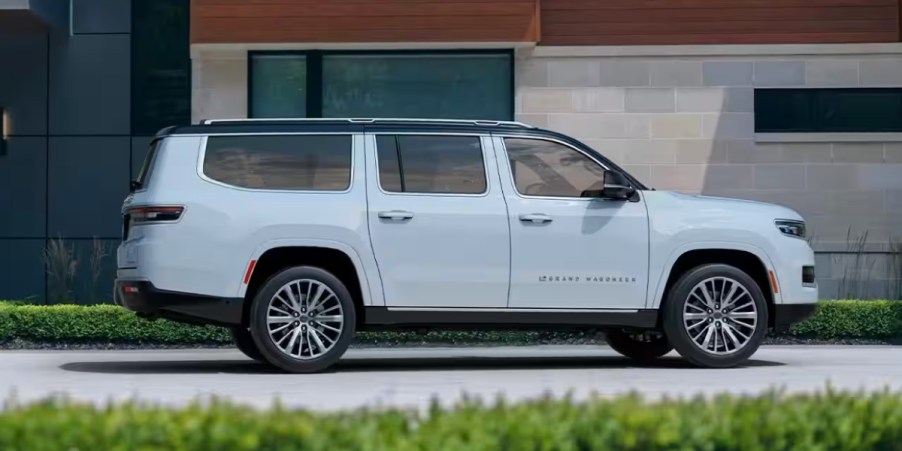
What Is Considered a Full-Size SUV?
SUVs come in all shapes and sizes. Automakers are changing the sizes of SUVs to suit the market. Demand for small SUVs is sky-high. Models like the Toyota RAV4 and Honda CR-V are international successes. Midsize three-row SUV models like the Kia Telluride are gaining popularity. What about full-size SUVs? Is anyone still buying them, and what qualifies an SUV as large or “full-size”?
What makes an SUV full-size?

Midsize SUVs are getting larger. Affordability could be a huge contributing factor to the growth of midsize SUVs. Consumers want to fit as many passengers as possible into an affordable SUV. So, midsize three-row models like the Kia Telluride and Hyundai Palisade are thriving.
Toyota’s new Grand Highlander three-row SUV targets the same audience as the Telluride. It’s huge compared to its predecessor, the Highlander. Mazda is also releasing a larger midsize three-row model, the CX-90.
So, what qualifies a full-size SUV, and is there even a difference anymore now that midsize models are getting so big? When it comes to full-size SUVs, size does matter.
The Chevrolet Tahoe is one of the most popular full-size SUVs on the market. It’s 210.7 inches long. The Chevy Suburban, another popular full-size SUV, is a massive 225.7 inches long. The massive Toyota Grand Highlander is 201.4 inches long. So, clearly, length (and size) is part of what makes an SUV a member of the full-size segment.
What are full-size SUVs known for?

Some other defining characteristics of large SUVs include incredible cabin and cargo space as well as towing capability. The Tahoe has a whopping 25.5 cubic feet of space behind its last row of seats. It has 72.6 cubic feet of space behind its second row. The large SUV can tow 7,600 pounds.
The Chevrolet Suburban and GMC Yukon both also tow over 7,000 pounds. So, full-size models are spacious, have plenty of cargo space, and can tow heavy loads like trailers. These SUVs are designed for large groups of passengers and often have notoriously poor fuel economy due to their size.
Midsize SUVs may be getting larger, but there’s still a distinct size difference between the average midsize and full-size SUVs. Full-size models are often built on large pickup truck platforms. Most popular new large SUVs for 2023 start over $56,000 (Chevy Tahoe, GMC Yukon, Chevrolet Suburban, Jeep Wagoneer, Ford Expedition, Toyota Sequoia).
What is the best full-size SUV?

General Motors makes some of the best full-size SUVs in the game across its portfolio of brands. The Chevrolet Tahoe appears on several large SUV ranking lists from respected publications. It starts at $54,200. According to Chevrolet, the Tahoe uses a 5.3-liter V8 engine to make 355 horsepower. It gets 21 miles per gallon in the city and 28 miles per gallon on the highway.
The Chevy Tahoe is praised for its roomy third row and handling. Its cabin and cargo space are exceptional. The Jeep Wagoneer, Ford Expedition, and Chevrolet Suburban are also among the best in the large SUV segment. Midsize SUVs may be getting larger, but there’s still a place in the industry for full-size SUVs.



